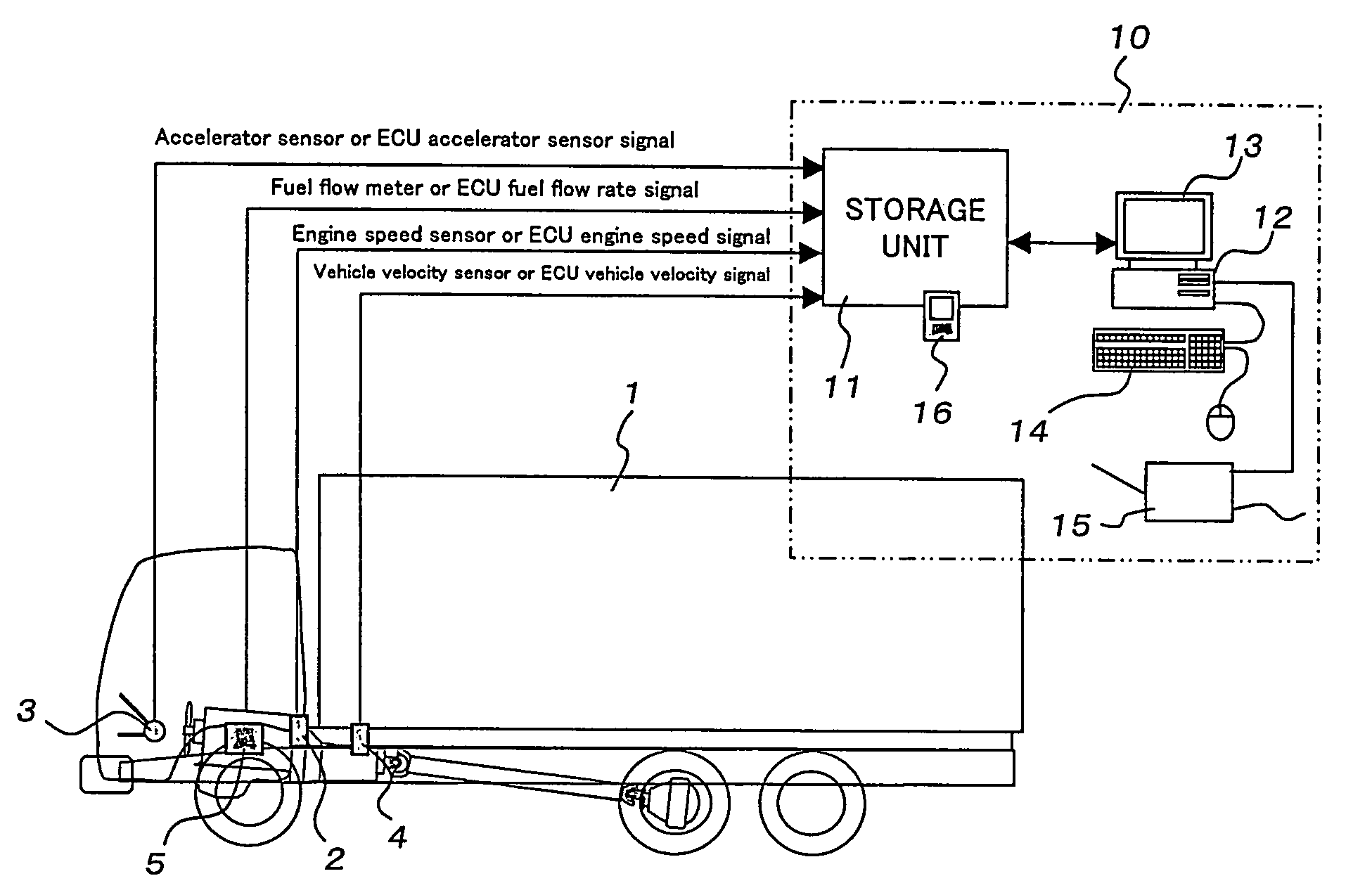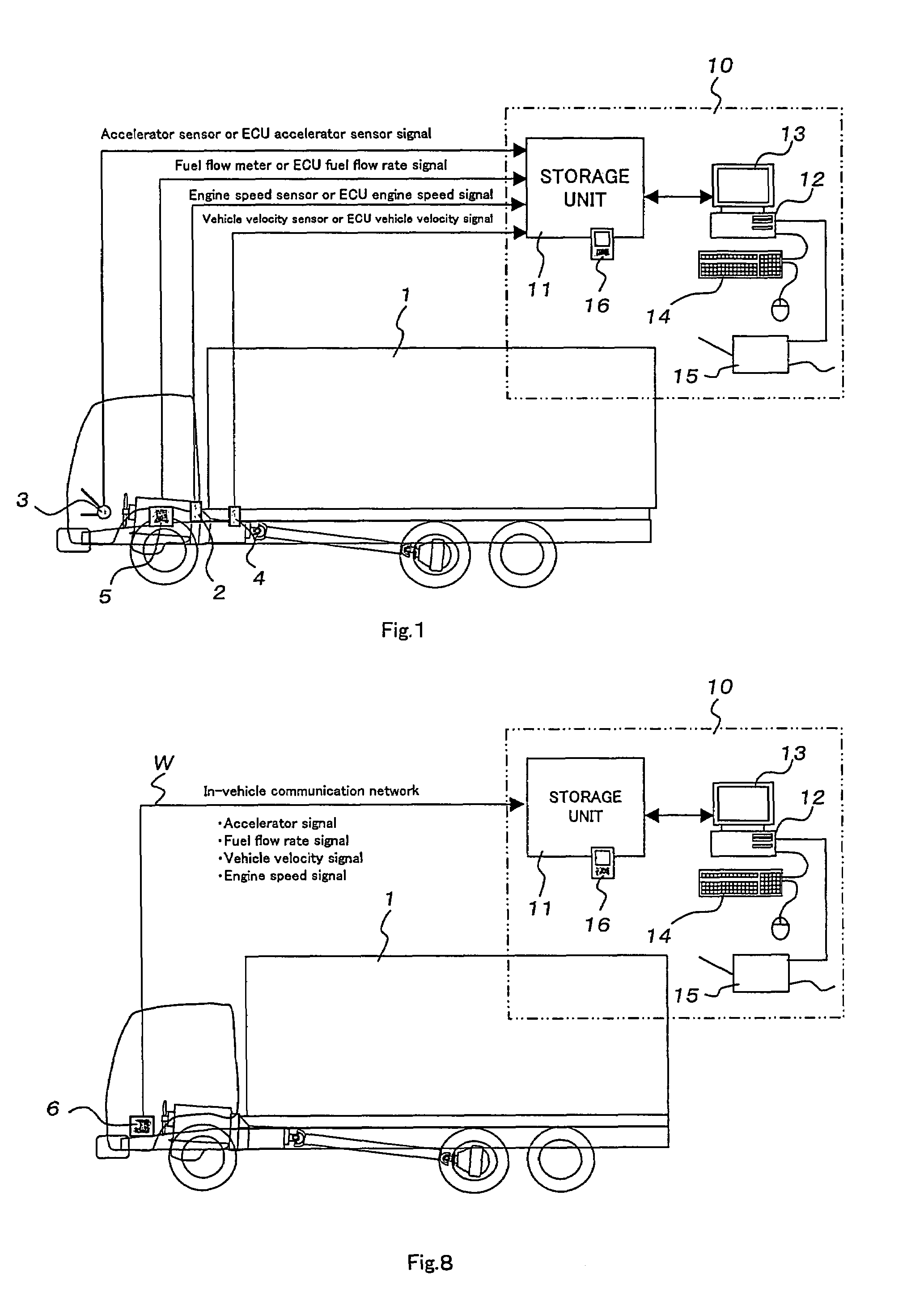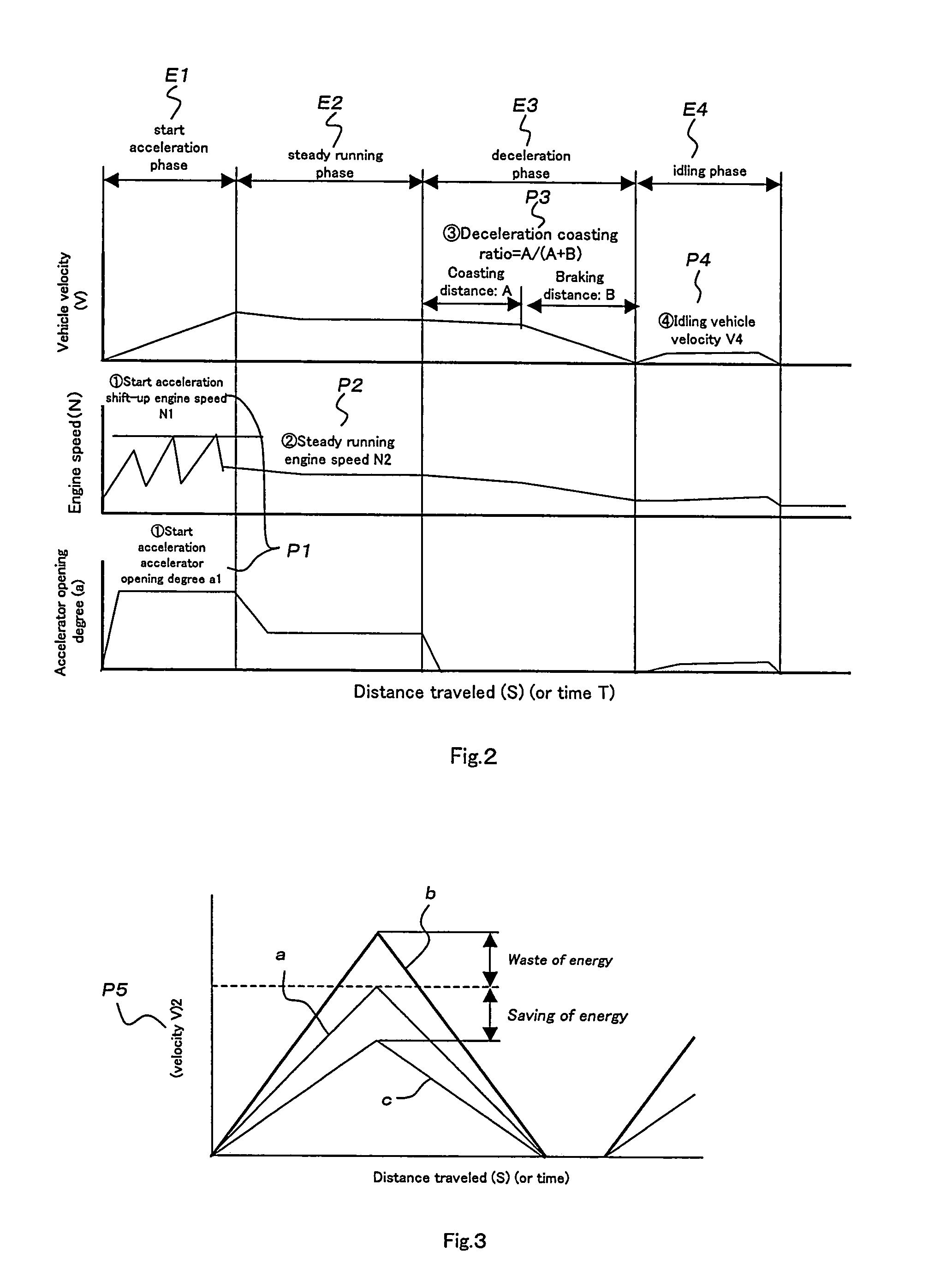Fuel consumption evaluation system
a fuel consumption and evaluation system technology, applied in the direction of liquid/fluent solid measurement, relative volume flow measurement, instruments, etc., can solve the problems of deteriorating fuel efficiency, affecting fuel consumption, and evaluation does not always reflect the real cause of fuel efficiency deterioration or improvement, so as to improve the accuracy of fuel consumption
- Summary
- Abstract
- Description
- Claims
- Application Information
AI Technical Summary
Benefits of technology
Problems solved by technology
Method used
Image
Examples
first embodiment
[0128]First, the invention will be described in reference to FIGS. 1 to 7.
[0129]The fuel consumption evaluation system according to the first embodiment comprises: engine speed measuring means 2 which measures the engine speed (number of revolutions) N of a truck 1 (hereinafter the engine speed measuring means is called the engine speed sensor); accelerator opening degree measuring means 3 which measures accelerator opening degree α (hereinafter the accelerator opening degree measuring means is called the accelerator opening degree sensor); vehicle velocity measuring means 4 which measures vehicle velocity V (hereinafter the vehicle velocity measuring means is called the vehicle velocity sensor); fuel flow rate measuring means 5 which measures fuel flow rate Fw (hereinafter the means is called the fuel meter); and control means 10 which evaluates fuel consumption Q of the truck 1 from the measured engine speed N, accelerator opening degree α, vehicle velocity V, and fuel flow rate F...
second embodiment
[0189]Next, the invention will be described referring to FIG. 8.
[0190]In the first embodiment as shown in FIGS. 1 to 7, the detection means for various parameters, namely the engine speed sensor 2, accelerator opening degree sensor 3, vehicle velocity sensor 4 and fuel flow meter 5, are connected with the onboard database 11 through exclusive lines respectively.
[0191]On the other hand, in the second embodiment as shown in FIG. 8, an accelerator signal, a fuel flow rate signal, a vehicle velocity signal, and an engine speed signal are collected as digital signals in a LAN repeater 6 by an in-vehicle communication network “in-vehicle LAN” and stored in an onboard database 11 through two wires (communication cable) W. Except these points, the system is substantially equivalent to the first embodiment shown in FIGS. 1 to 7 in all aspects including operation and effects and detailed description of the system is omitted.
third embodiment
[0192]Next, the present invention will be described referring to FIGS. 9 to 18.
[0193]As illustrated in FIG. 9, the fuel consumption evaluation system according to the third embodiment consists of equipment U1 in the vehicle and equipment U2 on the management side and a memory card 15 as a means to transfer data collected by the vehicle equipment U1 to the management side equipment U2.
[0194]The management side here refers to the vehicle management department of the freight company which owns the vehicle or the like.
[0195]The vehicle equipment U1 comprises: engine speed measuring means 2 which measures the engine speed (number of revolutions) of the vehicle (truck in the figure) 1 (hereinafter the engine speed measuring means is called the engine speed sensor); accelerator opening degree measuring means 3 which measures accelerator opening degree α (hereinafter the accelerator opening degree measuring means is called the accelerator opening degree sensor); vehicle velocity measuring m...
PUM
| Property | Measurement | Unit |
|---|---|---|
| speed | aaaaa | aaaaa |
| vehicle velocity | aaaaa | aaaaa |
| velocity | aaaaa | aaaaa |
Abstract
Description
Claims
Application Information
 Login to View More
Login to View More - R&D
- Intellectual Property
- Life Sciences
- Materials
- Tech Scout
- Unparalleled Data Quality
- Higher Quality Content
- 60% Fewer Hallucinations
Browse by: Latest US Patents, China's latest patents, Technical Efficacy Thesaurus, Application Domain, Technology Topic, Popular Technical Reports.
© 2025 PatSnap. All rights reserved.Legal|Privacy policy|Modern Slavery Act Transparency Statement|Sitemap|About US| Contact US: help@patsnap.com



